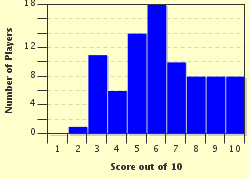Quiz Answer Key and Fun Facts
1. What was the primary purpose of a funeral mask in ancient Egypt?
2. Most Egyptologists agree that the image on the funeral mask accurately depicts the likeness of King Tutankhamun.
3. Obviously King Tutankhamun was wealthy enough to afford a gold funeral mask. What else does the gold on the mask symbolize?
4. The back of King Tutankhamun's funeral mask, as well as the inside, was engraved with magical hieroglyphic inscriptions that were spells from which Egyptian text?
5. The vulture is prominently displayed on the funeral mask of King Tutankhamun. Named for the goddess Nekhbet, it symbolizes the king's sovereignty over which area?
6. The cobra on the funeral mask of Tutankamun represents the goddess Wadjet. What is another term used for the upright spitting cobra?
7. The Egyptians wore kohl eye make-up and this custom is manifested on King Tutankhamun's funeral mask. What blue semi-precious stone is used to depict kohl on the mask?
8. On the funeral mask, King Tutankhamun is shown wearing the traditional Egyptian headdress. What is the headcloth worn by pharaohs called?
9. King Tutankhamun's funeral mask was decorated with which of the following materials?
10. Which part of King Tutankhamon's funeral mask was already broken when discovered, and met with a mishap again in early 2015?
Source: Author
ponycargirl
This quiz was reviewed by FunTrivia editor
bloomsby before going online.
Any errors found in FunTrivia content are routinely corrected through our feedback system.

